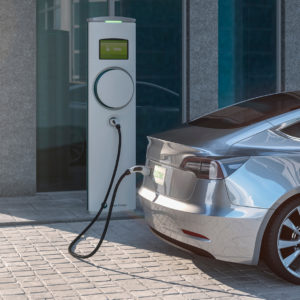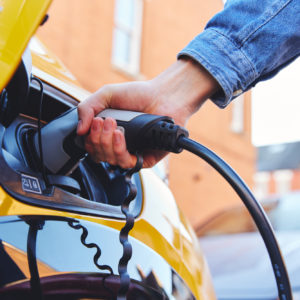You’ve probably noticed more electric vehicles (EVs) on the road. You could even own and drive an electric car thanks to incentives like rebates, low running costs, and cleaner emissions. Yet the number of public charging stations hasn’t experienced a growth rate commensurate with the upsurge in the EV population. Furthermore, electric cars require considerable time to charge their batteries. Even fast charging requires many minutes.
Until the logistic infrastructure can meet the demand, you must share a limited number of public charging stations with other electric car drivers. EV charging etiquette is critical at the public charging station.
Good EV Charging Etiquette
Just like when you use the gasoline pump at a gas station, there are dos and don’ts at public EV charging stations. Be polite and avoid actions that might come off as rude or unpleasant.
Here are helpful tips for good EV charging station etiquette:
Use the Compatible Plug-In Point
Always pull up to a public charging station with a plug-in point that your EV can use. An incompatible plug can’t charge your electric car. Even if you succeed in connecting your EV to the charger, the incorrect voltage can damage the battery and electrical systems.
Therefore, always know the charging dock type required by your EV ahead of time. You won’t waste time pulling up to the wrong plug-in point.
If another driver pulls up behind you, don’t keep them waiting. Move your EV to the correct charging station and let them charge at the dock.
Avoid Skipping the Line
As you approach the public charging station, check the area around it. You might find other EVs pulled off to the side, their drivers waiting for their turn to charge depleted batteries.
Either line up behind them or look for a different station. Whatever the case, avoid cutting in line. Otherwise, you might find yourself in a heated argument with the other drivers who got there ahead of you.
The Charging Station Isn’t a Parking Spot
Public charging stations aren’t long-term parking spots. When you pull into one, you should only stay long enough to charge your EV to reach your destination.
However, some drivers treat public charging stations as parking spots, especially if the charging service is free. They leave their electric cars parked there for the entire day or overnight.
EV owners aren’t the only ones who misuse public charging stations. Some people who drive gas or diesel vehicles also park in empty stations.
Avoid using public charging stations as impromptu parking spots. Usually, the station will have an EV charging sign displaying the maximum length of time you can use it. Once you reach the time limit, disconnect your EV from the charging dock and leave.
Leaving your fully charged EV docked for several hours can lead to additional costs. Most public charging stations can measure the battery charge level. If they detect your electric car remains plugged in despite having a fully charged battery, these stations add more fees.

Don’t Unplug Other People’s EVs
Have you ever rushed to the nearest public EV charging station and found all the docks occupied? No matter how frustrated you feel, don’t unplug one of the docked electric cars so that you can charge your vehicle in its place.
Is it illegal to unplug someone’s electric car? Technically no, but think of it this way. You would never drive up to another vehicle at the gas pump, wrench the pump nozzle away from the driver or attendant, and use it to refuel your car. So why would you do that to the EV equivalent?
Only Unplug Other EVs During Emergencies
The only legitimate reason for unplugging someone else’s EV is during a real emergency. If your electric car’s battery is almost out of charge and there are no other public charging stations within range, unplug the EV and charge your vehicle.
After charging your EV, plug the other electric car to the dock again. If you must leave immediately, write a note explaining why you had to interrupt the charging process.
Download and install a smartphone app that can direct you to the nearest public EV charging station. Examples include Electrify America, EV Navigation, and PlugShare.
These apps provide helpful information like public charging stations that aren’t working, charging rates, and available amenities. You can also update other EV owners about the conditions at the charging station you have recently used. Share your experiences to encourage other drivers to return the favor.
Monitor Your EV’s Charging Progress via App
Smartphone apps can also keep you informed about your EV’s charging progress as it happens. You can use an app from an electric car charging network, such as PlugShare and EV Navigation. Or you can download the tool provided by your electric car’s manufacturer.
Don’t Top Off Your EV’s Battery
When your EV receives enough charge to get you where you need to go, unplug it and leave so that other drivers can charge their electric cars. Don’t bother to top off your EV’s battery unless you expect to cover long distances or drive for extended periods before the next charge.
No matter how fast the EV charger works, the charging process slows toward the end. It’s usually not worth the time to squeeze in that last 10% charge. An 80% or 90% charge will suffice for most trips.
Put Explanatory Notes on Your EV
Do you have to leave your EV unattended at the charging station? Write an explanatory note and attach it to a visible part of your electric car. Finish your task as quickly as possible to avoid keeping other EV drivers waiting for too long.
Golden Rule
Do unto others what you want done unto you. That’s the Golden Rule. Apply this philosophy to every action you take at a public charging station. If you feel the temptation to unplug an EV that had gotten to the charging station first, think how you would react if someone did that to your car.
More EV Charging Tips
Good EV charging station etiquette is one of many things you should pick up as an EV owner. Here are a couple more tips to make EV charging an easier task.
Familiarize yourself with your EV. What type of charger does it require? Where is its charge port door? Can it use a DC fast charger? Knowing these and other relevant information helps you find and select a suitable plug-in point. If you’re unsure about the details, consult the owner’s manual or the dealership.
Are you going on a road trip beyond your EV’s maximum range? Find the charging stations on the way to your destination and mark them on a map. You can also use your car’s navigation system or a charging network app to locate these stations.
Visit our blog to learn more about your electric car, such as charging on the go and installing an EV charger at home.
Any information provided on this Website is for informational purposes only and is not intended to replace consultation with a professional mechanic. The accuracy and timeliness of the information may change from the time of publication.


















